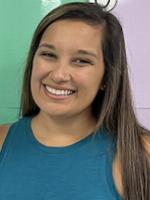



The purpose of this session is to demonstrate how teachers can incorporate technology to enhance the learning of Social Studies standards like American symbols. We will present an easily replicable interdisciplinary first grade culminating project known as the 3D D.C. Map Project. This cross-curricular learning experience encompasses a variety of standards all while integrating the arts and technology. Our overall objective is to provide students with a unique way to respond to social studies content through art with technology, dramatically enhancing their experience. First grade students work collaboratively to create miniature replicas of American symbols (the White House, the Lincoln Memorial, The Washington Monument, MLK Memorial, the Bex Eagle Statue, and The American Flag).
Participants will be provided with resources to replicate the 3D DC Map Project at any level, learning how to adapt it to their standards and grade level. We will present the step-by-step process and explain how the technology enhances their learning. Technology that will be explored includes:
-- Google Earth: This project utilizes this application as a way to take students on virtual tours to see the American symbols that each group researched.
-- Epic!, specifically its book collections and assignment features: These features allow teachers to differentiate books provided for research, providing students the opportunity to access information about their US symbol at their particular reading level. All students can then dive into diverse texts to become experts on the American symbol they are researching.
-- Green Screen by DoInk: Students write scripts and then present facts gathered while “on location” at their symbol in Washington, D.C.via green screen technology.
-- QR codes: This technology is used to share the knowledge the students learned with others.
This poster session will repeat the content outlined below every 15-20 minutes. A digital presentation will loop while we present the following:
1. Introduction
a. Overview of Project’s Purpose: The 3D DC Map Project is a cross-curricular project that occurs at the end of a first grade is a culmination of technology, research, and history to help facilitate the learning of our important Social Studies standards. The project allows students to work in groups to build their knowledge of American symbols and map skills. The project utilized a variety of technology to assist in curating and sharing student learning.
b. Standards: We will highlight the integration of ELA and Social Studies Standards as well as the ISTE standards.
2. The Impact of Cross-Curricular projects:
a. Infusing ELA, Social Studies, and technology increases student engagement as well as a deeper level of mastery of the content students are learning.
b. Technology is a large factor in education, especially since the pandemic. It can help support students in their efforts to interact and share the information. This project uses a variety of tech allowing students to interact with the content in a variety of ways.
3. Steps of the Project (including technology used)
a. Introduce basic content including vocabulary and what US symbols stand for Social Studies standards using Google Earth to “visit” the symbols. **Teacher must create a Google Earth “Project” mapping out the trip ahead of time.
b. Allow student choice by using a Google Form to have students rank their preferred US symbol to research
c. Create groups and assign differentiated book collections for individual and/or group research
d. Design and build models of DC symbols
e. Begin to Build map
f. Create Green Screen videos
g. Complete the map build and add QR codes onto the map
4. Value of Partnerships and Volunteers
a. Community Partnerships: Finding a partner to help with the purchasing of supplies can be a big help. We will list some ideas for partnerships to help make their projects successful. Grants, local store sponsors, or parents, are some of what we will mention. We will provide participants with tips to find these types of partnerships and explain how we used Amazon Wish Lists to help track supplies needed and ordered.
b. School Partnerships: Brining specialists/fine arts teachers into the project can greatly enhance it. An example that will be given is having the music teacher teach the Star Spangled Banner to the student. We record them singing and add a QR code to that video onto the map.
c. Volunteers: We will discuss the importance of volunteers for the success of this project if teachers do not have a teacher’s assistant.
ADDITIONAL NOTES:
1. Cards will be available that include a QR code to our resources folder.
2. Also, we will bring one of this year's completed map for attendees to interact with and explore.
3. If this session is converted into an interactive session, we would have teachers circulate interacting with the technology used as well as hands on building.
“The best uses of educational technology must be grounded in a creative mindset that embraces openness for the new and intellectual risk-taking.”
http://www.punyamishra.com/wp-content/uploads/2016/08/henriksen-Mishra-Fisser-Creativity-ETS2016.pdf